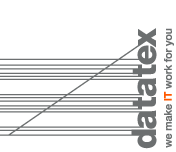
The textile-fashion districts in Italy
Article by Luigi Torriani
 The Italian textile-fashion sector, despite the difficulties of recent years, is still a strategic sector in which Italy is a European leader. In fact, according to Sace data, the Made in Italy fashion system accounts for 41% of the sector’s European turnover, exceeding 81 billion euros, with over 435 thousand employees, representing 24% of the sector’s total employment in the EU. With 56,400 companies, it represents 25% of the textile and fashion companies in Europe.
The Italian textile-fashion sector, despite the difficulties of recent years, is still a strategic sector in which Italy is a European leader. In fact, according to Sace data, the Made in Italy fashion system accounts for 41% of the sector’s European turnover, exceeding 81 billion euros, with over 435 thousand employees, representing 24% of the sector’s total employment in the EU. With 56,400 companies, it represents 25% of the textile and fashion companies in Europe.
In terms of the total number of companies in the Italian manufacturing sector, the textile world ranks second in terms of the number of companies, behind the metal products sector (with 63,700 companies) and ahead of the food and beverages sector (with 55,000 companies), while in terms of turnover, the textile-fashion sector falls to fourth place (after food and beverages, mechanics, metal products, other intermediates), but it is of crucial importance to the Italian economy, overtaking fundamental sectors such as “automobiles and pharmaceuticals”.
Since 1987, Datatex has been closely following the Italian textile industry and the historic textile districts that characterise Made in Italy production. Which are the most important districts?
PRATO (TUSCANY)
It is the largest textile district in Europe and one of the world’s most important centres for the production of woollen yarns and fabrics. It has an ancient history whose origins date back to the 13th century and is made up of around 7,000 micro, small and medium-sized enterprises in the sector, which employ 34,000 people, have a total turnover of around 4.5 billion and exports of over 2 billion, mainly producing fabrics for the clothing industry, yarns for the knitting industry, knitted products and garments.
BIELLA (PIEDMONT)
Biella is a historical textile centre specialising in the production of fabrics for clothing and yarns for weaving and knitting. It is an important wool centre for high fashion, with over 1,500 companies in the sector, 17,000 employees and exports of around 2 billion euros.
COMO AND LECCO (LOMBARDY)
Como is a historic textile centre specialising in the production of silk fabrics and high-end products for the luxury market, while nearby Lecco focuses on furnishing and upholstery fabrics.
In total, there are more than 1,300 companies in the sector (1,100 in Como and 230 in Lecco), employing more than 15,000 people (12,300 in Como and 2,800 in Lecco) and with a turnover of around 3 billion (2.2 billion in Como and 800 million in Lecco).
VARESE – GALLARATE (LOMBARDY)
Historically a textile district with a strong cotton connotation, today Varese is also important for the processing of synthetic and artificial fibres, with companies involved in all phases of the textile supply chain, with a strong focus on clothing in the Gallarate area and an important industrial segment linked to the activity of finishing yarns and fabrics.
There are more than 1,300 companies in the sector, with a total of 10,600 employees and exports of 1 billion and 300 million euros.
CARPI (EMILIA ROMAGNA)
An important district for textile clothing, ready-to-wear, knitwear and Made in Italy clothing, Carpi today has around 1,000 companies in the sector, with a total of 7,000 employees and a turnover of around 1.5 billion euros.
VENETO
A strategic region for the textile sector, Veneto has a very important district (Schio – Thiene – Valdagno) and other important districts in Verona (clothing, fast fashion) and Treviso – Montebelluna.
In total, Veneto can boast 17 thousand companies in the textile-fashion sector, 100 thousand employees and a turnover of 18 billion euros.
Other districts of excellence in Italian textile-fashion that must be mentioned are:
BERGAMO (Valseriana / Bargamasca Valcavallina Oglio)
BRESCIA (Lower Bresciana)
CASTEL GOFFREDO – MANTUA
EMPOLI
AREZZO (Casentino – Val Tiberina)
MARCHE (Urbania – Sant’Angelo in Vado – Pergola – Sassocorvaro – Mondolfo / Montappone and Massa Fermana)
PERUGIA
ABRUZZO (Vibrata – Tordino Vomano / Maiella – Chieti)
LAZIO – LIRI VALLEY
CAMPANIA (Grumo Nevano/San Giuseppe Vesuviano / S.Agata dei Goti/Casapulla/S.Marco Dei
Cavoti/Aversa/Trentola-Ducenta)
PUGLIA (Corato-Barese)
EASTERN SICILY

